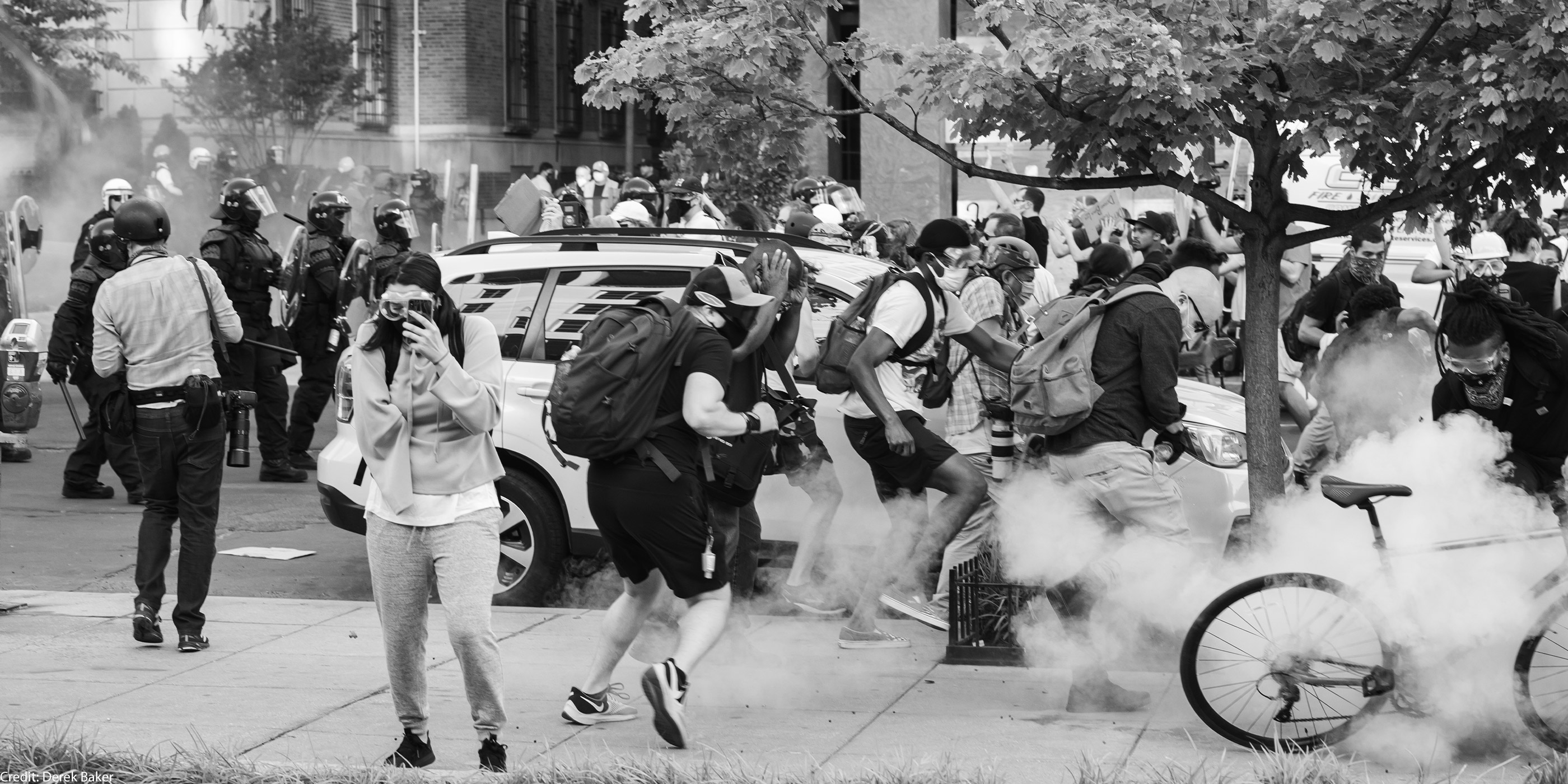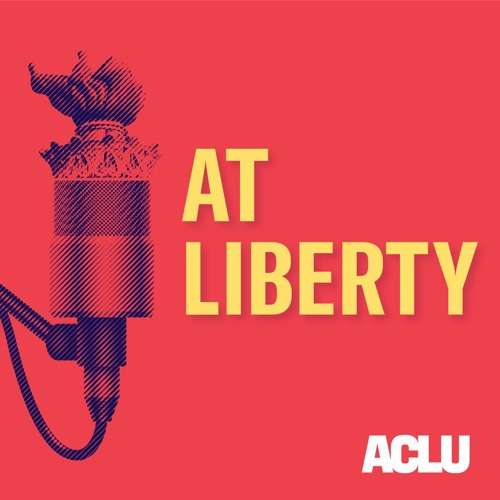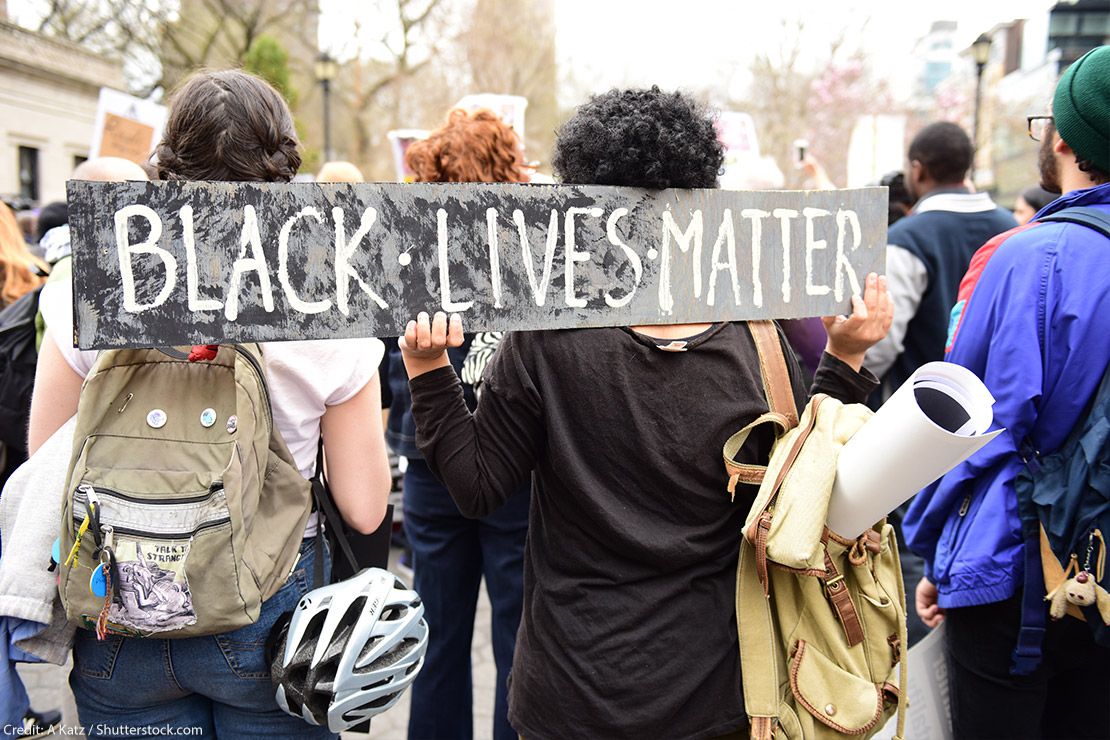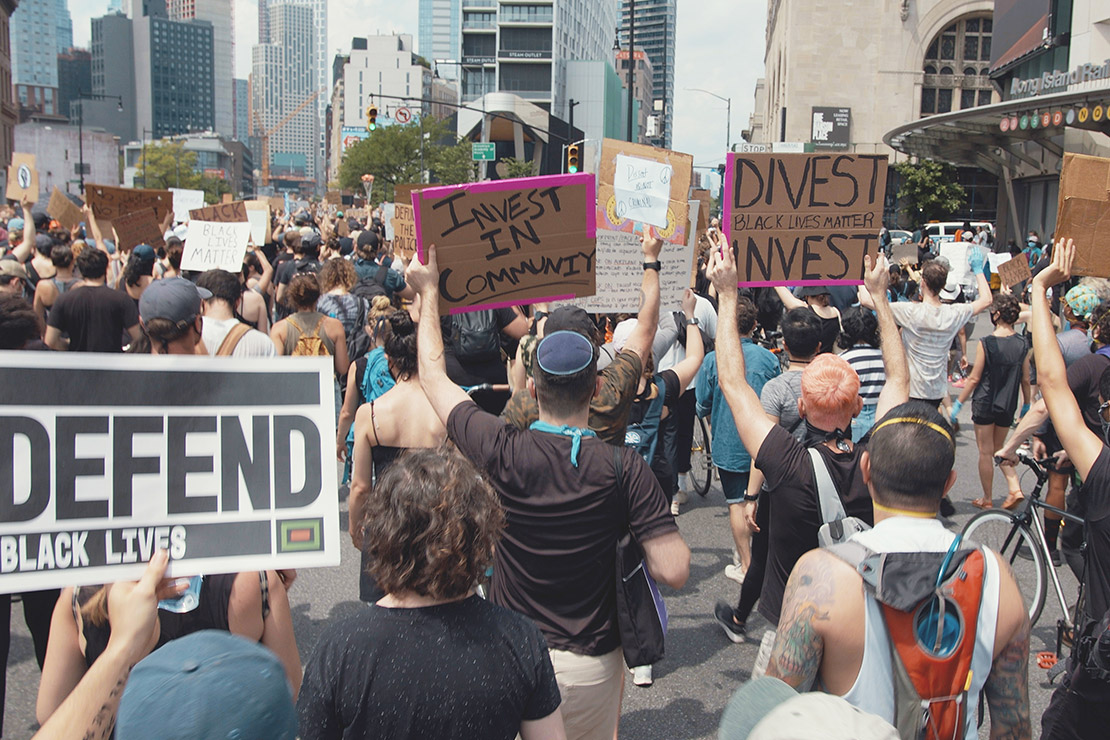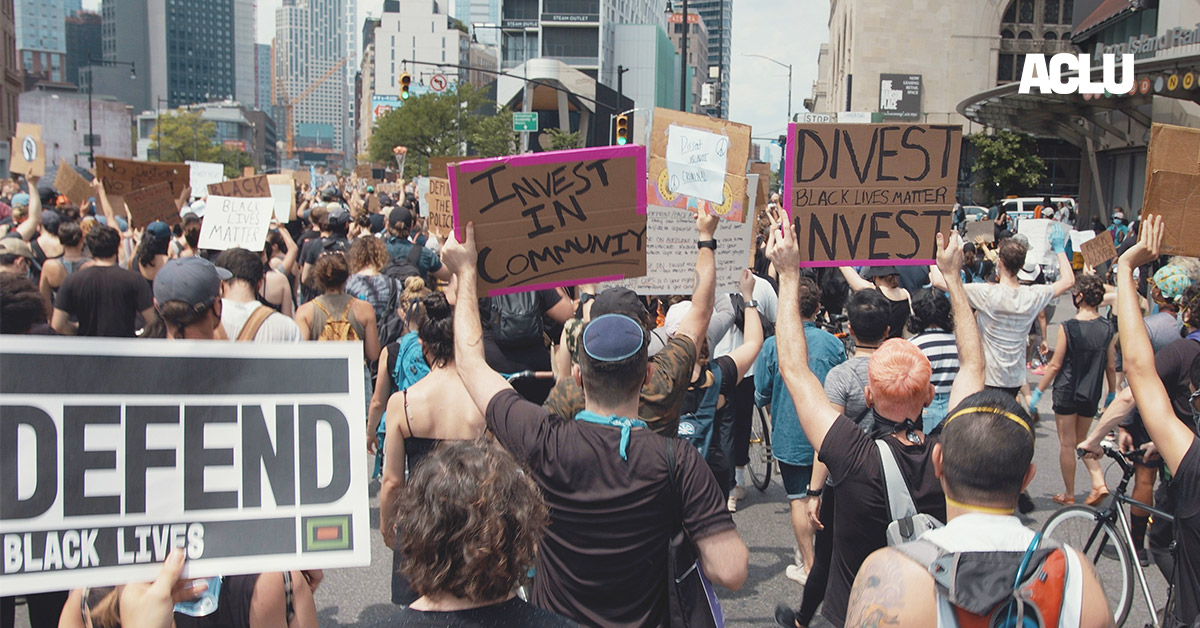When Kishon McDonald saw the video of George Floyd’s murder at the hands of four officers from the Minneapolis Police Department, he could tell it was going to turn the country upside down.
“I knew it was going to catch fire,” he said.
McDonald, a former sailor in the U.S. Navy, watched over the following days as demonstrations against police brutality spread from Minneapolis to cities and towns across the country, eventually reaching Washington, D.C., where he lived.
On June 1, he heard that people were planning to peacefully gather at Lafayette Square, a small park directly across from the White House, and decided to join them. By then, police had begun to attack and beat demonstrators in Minneapolis, New York, and others in states everywhere, escalating tensions as smaller groups broke into shops and set fire to police cars.
But when McDonald arrived at Lafayette Square, he found a crowd of a few thousand people cheering, chanting slogans, and listening to speeches. Washington D.C. Mayor Muriel Bowser had imposed a 7 p.m. curfew after clashes the night before, but that was still an hour away.
“Everybody there was like, it’s alright, we’re going to be here until 7 o’clock,” he said. “It was a very good energy.”
It wouldn’t be long before that would change.
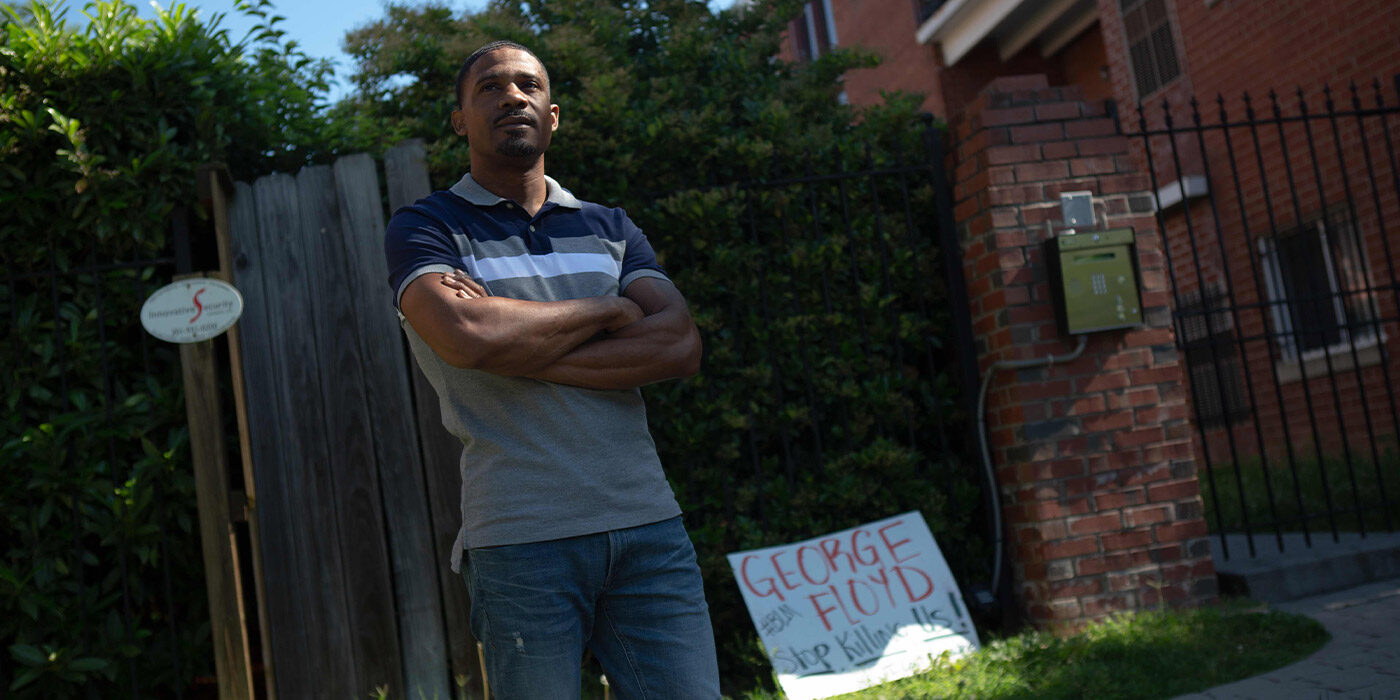
In the days following George Floyd’s murder, President Trump had focused his attention on the relatively small number of people who had damaged property, threatening to use the “unlimited power of our military” and tweeting “when the looting starts, the shooting starts.” What the protesters gathered in Lafayette Square that day didn’t know was that he was planning to stage a photo opportunity at a nearby church that evening.
Unbeknownst to McDonald, as he and the others chanted “hands up, don’t shoot,” the U.S. Park Police and other law enforcement agencies were just out of sight, donning riot gear and checking the weapons they would shortly use against the crowd to pave the way for the president’s walk to the church.
At 6:30 p.m. — half an hour before Washington D.C.’s curfew — dozens of battle-clad officers rushed the protest, hurling stun grenades and firing tear gas canisters, rubber bullets, and pepper balls into the crowd. McDonald says there were no warnings, just an onslaught of violence.
“All hell broke loose,” he said.
As the deafening explosions from the stun grenades gave way to thick clouds of tear gas, terrified protesters began to run from the batons and riot shields that police were using to force them out of the square.
“It was just straight fear. Everybody was scared and running for their lives,” he said.
McDonald tried to plead for instructions from the advancing officers, asking them what they wanted people to do. Instead, one threw a stun grenade at him.
“As it exploded, hot shrapnel hit my leg,” he said. “It felt like somebody put a cast iron skillet on my leg, it was just so hot. I started jumping up and down trying to get away from it, but shrapnel was going everywhere.”
Suffocating tear gas enveloped him and the other protesters, making them gasp and cough as they ran down the street.
“I saw a young boy, he must have been about 15, and he was choking a lot. Somebody put a shirt over his face and kind of ran him out,” he recalled.
McDonald had seen enough. Bruised from being hit with riot shields and with his vision still blurred from the tear gas, he walked home. In a phone interview with the ACLU, he said that the experience had made him more wary of attending protests, but it also illustrated why he’d gone there to begin with.
“It seems like everything is getting to be a military type thing in our society, and we were protesting to calm that down,” he said. “And the message we got is, ‘No, we aren’t calming down.’”
“I hope someone gets held accountable,” he added.
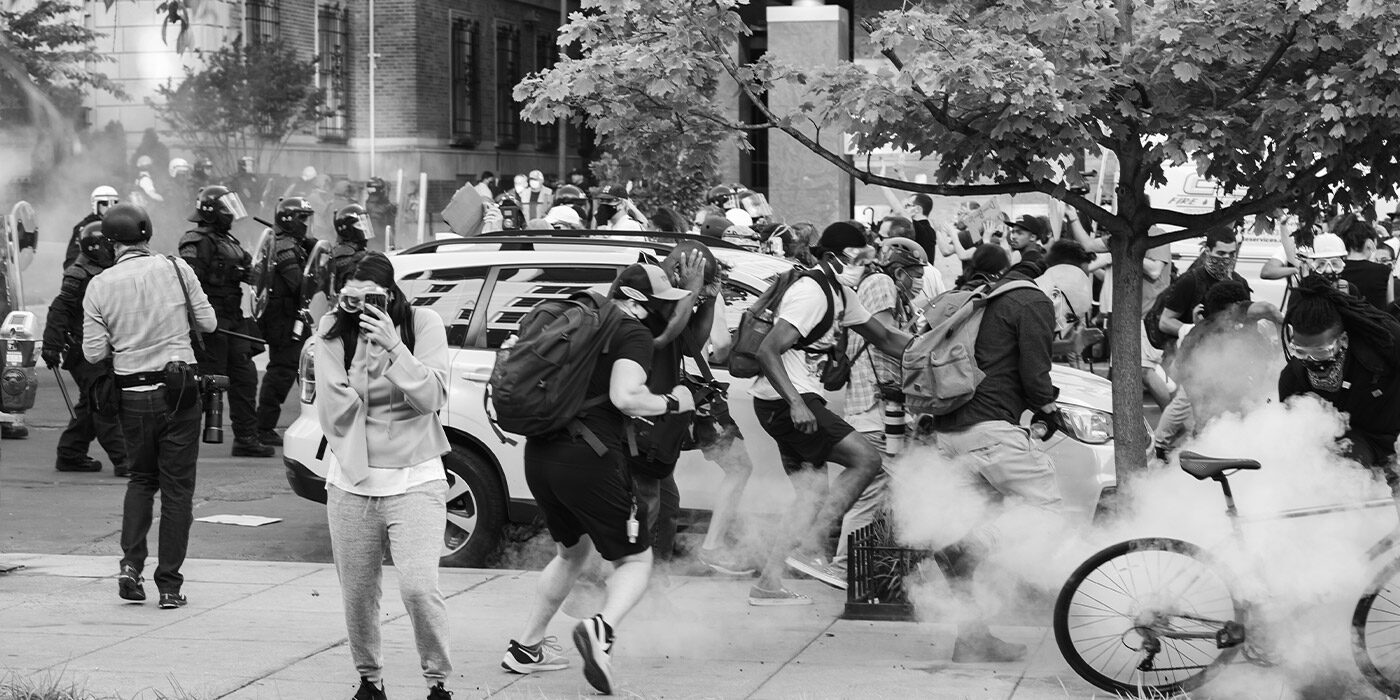
In the wake of George Floyd’s death, Americans poured into the streets to voice their condemnation of police brutality against Black people. The weeks that followed were a milestone in American history, with protests and displays of solidarity reaching towns as small as Cadillac, Michigan, and cities as large as Atlanta. As months of a painful COVID-19 lockdown gave way to incandescent fury over the killing of Floyd and the violent response of the Minneapolis Police Department towards the initial protests, a few people went as far as burning police precincts or destroying upscale shopping districts.
The vast majority of protests, however, were almost entirely peaceful.
Still, police departments across the country deployed staggering levels of violence against protesters. On social media, the world watched a near-instantaneous live feed of police in dozens of cities firing tear gas, rubber bullets, and other projectiles into protests, using pepper spray against protesters and journalists alike, and beating people with batons.
This widespread and indiscriminate deployment of what are often called “less-lethal” weapons – LLWs – injured countless people, some severely.
In Austin, Texas, 20-year-old college student Justin Howell suffered a skull fracture after being shot in the head with a “beanbag round” filled with lead pellets. Linda Tirado, a journalist and photographer, lost her left eye to a “rubber bullet” fired by police in Minneapolis. In Seattle, 26-year-old Aubreanna Inda nearly died after a stun grenade exploded next to her chest.
According to Carl Takei, a senior staff attorney at the ACLU’s Trone Center for Justice and Equality who focuses on police practices, this widespread and violent use of LLWs during the George Floyd uprising was an attack on the protesters’ constitutional right to free speech.
“There’s just no justification under the existing Fourth Amendment framework for the use of these weapons,” he said. “And it’s happening over and over again, with patterns that are so similar across the different cities.”
For years these weapons were referred to as “non-lethal.” But in practice, they have a long history of causing serious injuries and deaths.
A 2016 report by the International Network of Civil Liberties Organizations analyzed 25 years of available data on the use of LLWs by law enforcement across the world. It found that between 1990 and 2015, “kinetic impact projectiles” — a category that includes rubber bullets and beanbag rounds — caused at least 1,925 injuries, including 53 deaths and 294 instances of permanent disability.
Tear gas, which is banned for use in warfare under the 1925 Geneva Protocol, injured at least 9,261 people over the same time period, including two deaths and 70 permanent disabilities.
The report also found that LLWs are most commonly used to stamp out political protests and shut down aggressive demands for greater rights.
According to Takei, even the term “less lethal” downplays the damage they can inflict.
“Beating somebody with a baseball bat, as long as you’re not hitting them in the head or other sensitive areas of the body is ‘less lethal,’ but it’s still incredibly violent,” he said.
During the civil rights and anti-war demonstrations of the 1960s, police used tear gas and other LLWs extensively to disrupt and disperse protests. But after three federal commissions found that abuse of those weapons provoked aggressive responses by protesters and contributed to a cycle of violence, they fell out of favor with U.S. law enforcement as a method of controlling crowds. According to the Marshall Project, in subsequent decades, some police departments adopted a “negotiated management” approach to protests, working with organizers in advance to establish ground rules meant to prevent violence.
But any movement toward de-escalation evaporated in the wake of large anti-globalization protests that took place during a 1999 World Trade Organization meeting, in an event that would come to be called the “Battle for Seattle.” In a prelude to how many police departments would later approach the George Floyd uprising, Seattle police attacked the mostly non-violent protesters with LLWs, provoking a handful to respond aggressively in kind.
“The response of a lot of police departments after that was, well if some people won’t act as predicted, we should have a hyper-aggressive response for everybody,” said Takei. “But when police adopt this type of response to Black-led protests against police violence, they are repeating a pattern of brutality that goes back to the origins of American policing in Southern slave patrols.”
Now, as outcry over the indiscriminate use of LLWs against Black Lives Matter protesters mounts, some municipalities are weighing restrictions on the weapons. After the ACLU sued the Seattle Police Department in early June for its violent response to protests in the city, a judge ordered police there to cease using the weapons against peaceful demonstrators, saying they had “chilled speech.”
Days later, Seattle’s city council voted unanimously to prohibit their use against protesters. Legislators in Atlanta and other cities have also proposed similar bans.
The ACLU spoke to a number of people who were attacked with LLWs by police during demonstrations over George Floyd’s murder in recent weeks. This is how they described their experiences.
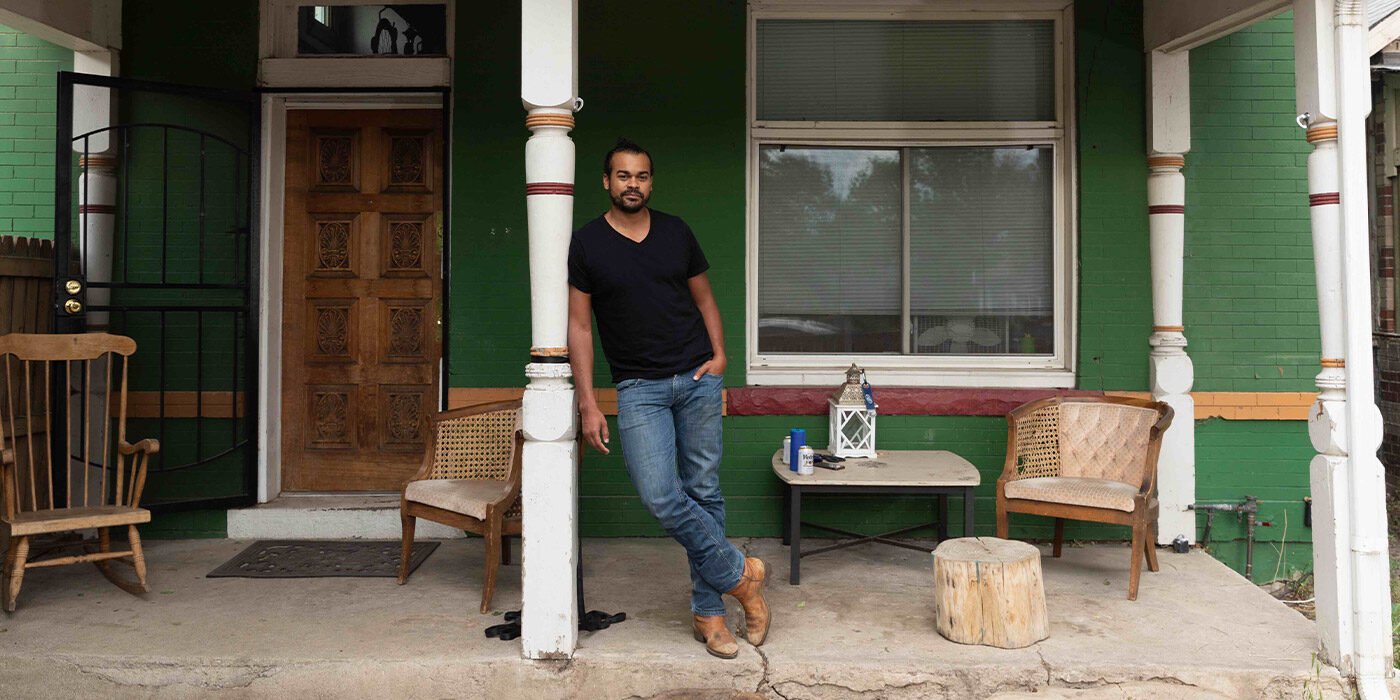
Gabe Schlough wasn’t surprised that the Minneapolis Police Department had killed another one of its Black residents. He lives in Denver now, but he’d gone to college years earlier in Minneapolis. Just before he graduated, he’d been shot in the back with a stun gun by police who entered his home and tried to arrest him in a case of mistaken identity.
Schlough had been invited to a protest at downtown Denver’s Capitol Building that night, but instead he decided to drive his motorcycle up into the mountains with a friend.
“In one of the areas where people were hiking and snowboarding and skiing down I saw three Black people, and I was just fucking happy,” he said. “I was like, thank God not every Black person thinks they need to be at the Capitol right now.”
But when he got back home later that night and saw images of the Denver Police Department’s response to the protest, he felt his blood start to boil.
“We can’t even give doctors and nurses facemasks, but we can give our police access to militarized weapons that are exceedingly more expensive and hard to create than the protective mechanisms we need for health care workers,” he recalled thinking.
Schlough has a degree in public health anthropology, and he’d worked in health care across the world, including a stint in an Ebola clinic in Sierra Leone. He had medical training and had participated in protests before, so he decided to defy the curfew along with a few friends to see if he could offer help in case anyone got hurt. Donning his face mask along with sunglasses to protect his eyes, Schlough set off towards the Capitol Building.
When he arrived, he saw a crowd of two or three hundred people facing down a line of police.
“They were standing just a little bit more than shoulder to shoulder apart with full riot gear, with their face shields and full protective armor on,” he recalled.
Schlough moved up toward the front of the crowd. Behind him, somebody set a pile of garbage on fire. That was all the police needed to begin their advance. As they moved forward, they shot canisters of tear gas into the crowd and tossed stun grenades.
“I was going around and telling people who didn’t have eye coverings to watch their eyes and protect their face,” he said. “Just running up and down the line and getting people educated, like this is happening and this is what you need to know.”
As a canister of tear gas landed next to him, Schlough bent down to try and cover it with a traffic cone so the gas wouldn’t spread. Suddenly, he felt sharp blows to his face and chest.
“A shock hit me and my head popped up,” he said. “I felt like somebody had punched me in the chest.”
Schlough had been shot with rubber bullets, although he didn’t know it yet. As he fell back further into the crowd of protestors, someone told him he was bleeding.
“You need to go to a hospital,” they said. “Your face is falling off.”
Another bystander pulled out his phone and showed Schlough his injury. The bullet had left a gaping wound on his chin, and blood was pouring down onto the front of his shirt. In retrospect, Schlough says he thinks he was specifically targeted, and that police knew exactly where they were aiming when they shot him.
He and a friend left and started walking toward a nearby hospital where he did volunteer shifts. But when they arrived, Denver police were also there.
“There were cop cars there and more pulling up, and I understood that it was not a safe place for me to get treated because of the amount of police presence there,” he said.
Instead, Schlough had to drive outside Denver to be treated at a different facility. Doctors cleaned his wound and gave him 20 stitches. More than a week later, part of his chin is still numb. He worries that he may have suffered nerve damage.
Last Christmas, while visiting his mother in Wisconsin, he says one of her friends asked him what the most dangerous place he’d ever been was.
“I told her that I’m the most scared when I’m in the U.S. and around a police officer,” he said. “Because I know that no matter who I am or what I’ve done in my life, I can be shot and killed, and nothing will matter.”
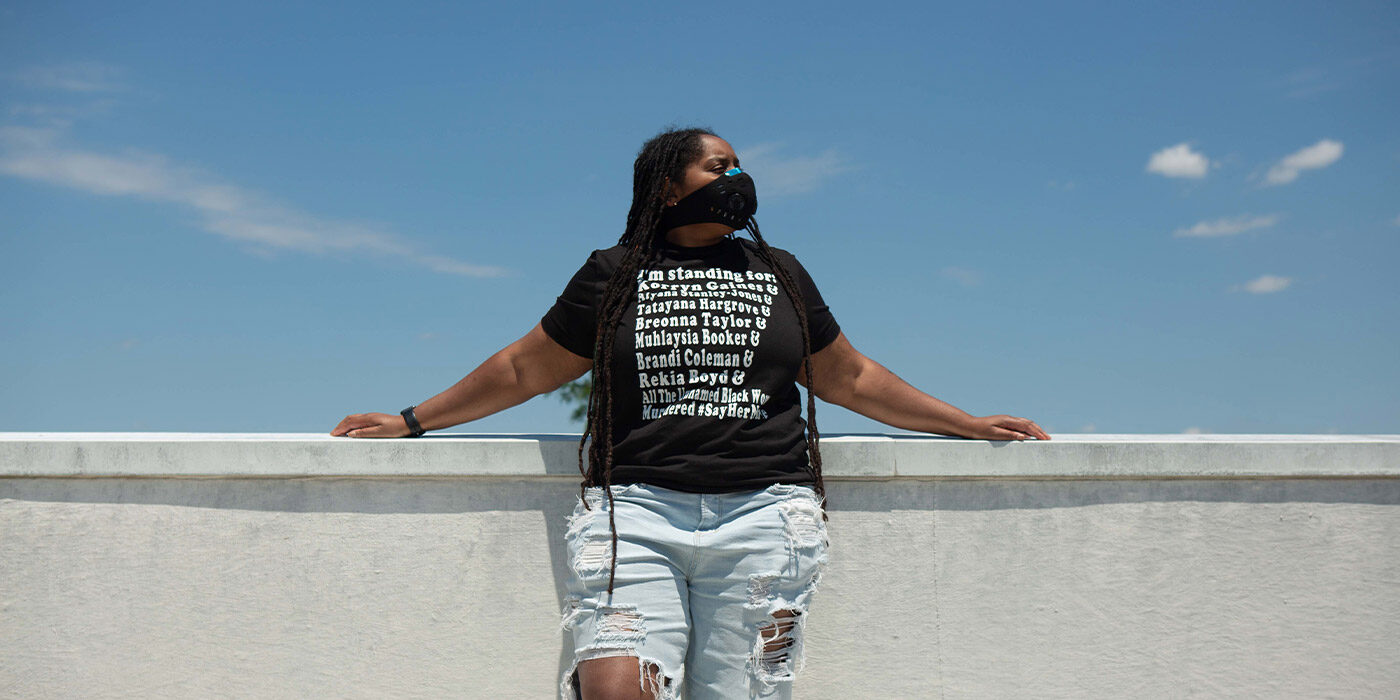
Toni Sanders arrived at Lafayette Square along with her wife and 9-year-old stepson in the late afternoon of June 1 – the same day that Kishon McDonald was there. Their son — identified in court papers as J.N.C. — had been watching the news over the preceding days, and the family had been having difficult conversations about George Floyd and why there was unrest rocking the country.
“We spoke about Aiyana Stanley-Jones and Tamir Rice, and people right here in D.C. who had been killed by Metropolitan Police — Raphael Briscoe, Terrence Sterling, Marqueese Alston, and explained to him that was why people were protesting,” Sanders said.
He said that he’d like to accompany Sanders and his mother to Lafayette Square.
“I assured him that it would be safe because it was a peaceful protest and that we would leave before the curfew started,” she said.
At first, she was glad that she’d agreed to bring him to what felt like a “community environment.” People in the square were passing out snacks, chanting, and kneeling in solidarity with George Floyd.
“Everything started out wonderful, it was a great experience,” she recalled. “We even took a picture when we first got down there just to remember the date we all stood together.”
Then, the attack began.
“I just heard the loud bah bah bah bah, and smoke started to fill the area.”
Sanders was immediately terrified for her young stepson.
“I just started screaming to my family, run, run, run,” she said. The three sprinted away from the sound of detonating stun grenades and the shrieks of injured protesters. After making it a few blocks away, they stopped to catch their breath and check in with one another.
“He said, ‘I can’t believe I just survived my first near-death experience.’ And it literally broke my heart because there’s honestly nothing I could say to him. I couldn’t tell him this wasn’t a near-death experience.”
Sanders was furious that police hadn’t warned protesters to disperse before violently clearing the park. If they had, she said, she would have quickly brought her stepson to safety.
“If we had been asked to either move back or leave, we would have. We would not have protested that because we have a child that we must look out for,” she said.
After the attack, Sanders’ son expressed anger and hurt over how police had treated them. Sanders had refused to allow the experience to scare her away from attending protests, but now when she left the house he would ask her to promise that she wouldn’t die.
“I wanted to show him that even though you’re afraid, if someone is trying to take your rights and do you wrong, you have to stand up for who you are and what you believe in,” she said.
The couple decided to put him into therapy to work out how that day affected him. Sanders says he told his therapist that he thinks that it’s the end of the world now, and that the government is at war with Black people.
“Now we have to have uncomfortable conversations with him about systemic racism, overt racism, covert racism,” she said. “And it’s horrible to have to take that innocence from him.”
Along with Kishon McDonald, Sanders is one of two plaintiffs in an ACLU lawsuit over the attack on Lafayette Square protesters that day. Over the phone, she recites the poem ‘If We Must Die’ by Claude McKay.
We’ll face the murderous, cowardly pack,
Pressed to the wall, dying, but fighting back!
“We’re here to show you that we’re still citizens, and we’re going to exercise our rights, and there’s nothing you can do about it.”
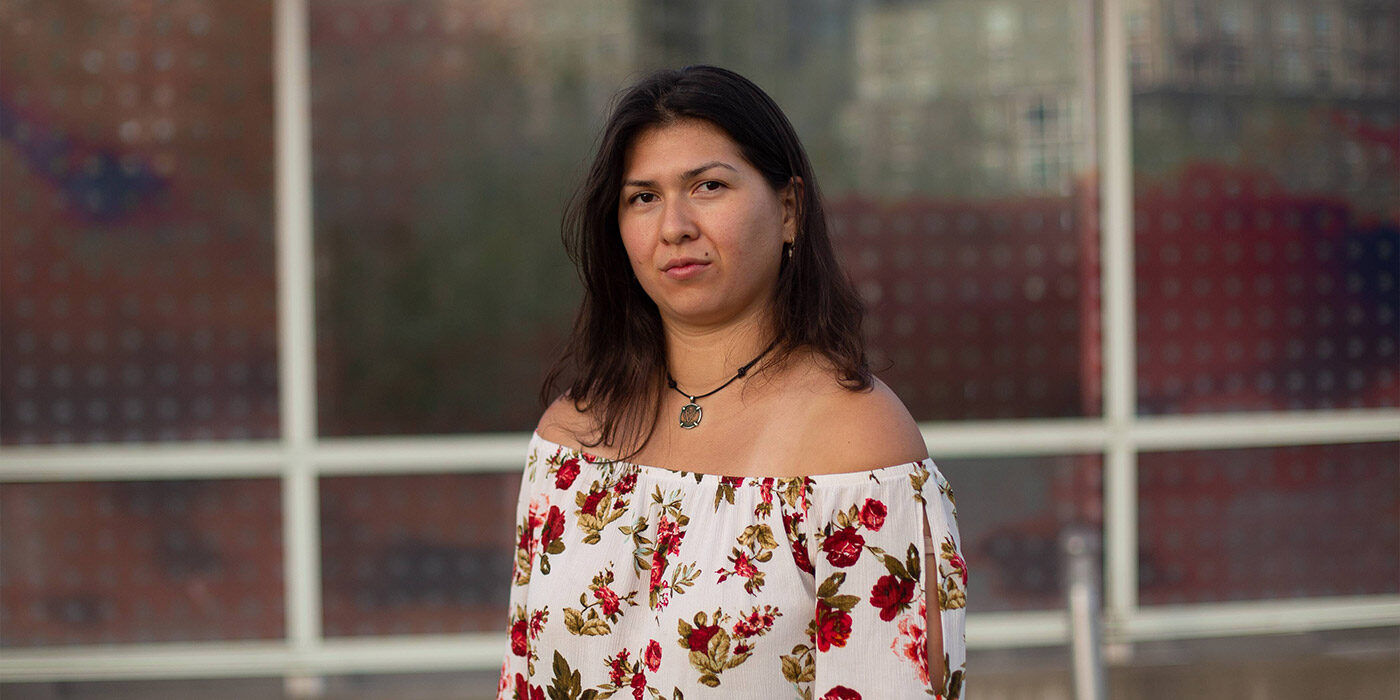
On May 30, first-year law student Alexandra Chen marched to a police precinct in downtown Seattle along with a few hundred other demonstrators. It was the second protest she’d attended, the first being the day before. When they arrived at the precinct, there were police in riot gear out in front, with others standing in the windows and watching the crowd from above.
“People were clearly agitated, but I didn’t see anyone really try to push the ticket,” she said. “Folks were just crowding around and leading chants.”
A few scattered water bottles along with a road flare were thrown at the precinct, but aside from that, Chen said nobody in the crowd was signaling that violence was coming.
“I remember thinking to myself, ‘You know, this would be a great opportunity for someone to come out with a megaphone and make a statement about how you understand why we’re so angry and you want to work with us on how to fix this,’” she said.
Instead, just like in Washington, D.C., Denver, and dozens of other cities, the Seattle Police Department began to throw stun grenades and tear gas into the crowd.
“There was no warning at all,” she said. “It was just absolute chaos.”
When the first stun grenade detonated near her, she felt a “deep percussive feeling” in her chest. People began to scream and run as tear gas filled the street. As she and her friend tried to move away from the precinct, she noticed another young woman desperately trying to find fresh air.
“There was a gap in a wall that was about six to eight inches between buildings, and she was trying to escape the gas. It looked like she was trying to crawl into that space, and you could hear her retching,” she said.
Tear gas is by its nature indiscriminate. It can’t be controlled or targeted to incapacitate specific people. As soon as a canister or grenade is launched, it becomes the property of the wind. Young and old alike are subject to its effects, which Chen says go from “uncomfortable to intolerable in a short amount of time.”
Chen says that when the group first arrived at the precinct, nearly everyone was wearing masks to prevent the spread of COVID-19. But after the tear gas was fired, people began to rip them off as they choked, coughed, and gasped for air.
“First, you think to yourself, “Okay, I can tolerate this,’” she said. “You don’t really expect that it’s going to get worse, but it does. It moves deeper into your face and once it gets into your sinuses, everything it touches burns.”
All around her, people were calling out for their friends and loved ones through the thick smoke.
“It was hard to tell which direction to run because when they threw the canisters, they rolled down the hills spewing tear gas the whole way. So effectively, you had not just the immediate area in front of the police station gassed, you had the whole block, and when you’re in the middle of it, you can’t tell where it ends,” she recalled.
After Chen and her friend emerged from the cloud, a medic nearby helped flush her eyes out with water, and the two walked back to her apartment. She is now a plaintiff in an ACLU lawsuit brought against the Seattle Police Department over its use of tear gas and other LLWs.
“I don’t care what they want to say about how people are violent,” she said. “What I saw was peaceful protesters met with an immediate and overwhelming show of force to get us to disperse.”
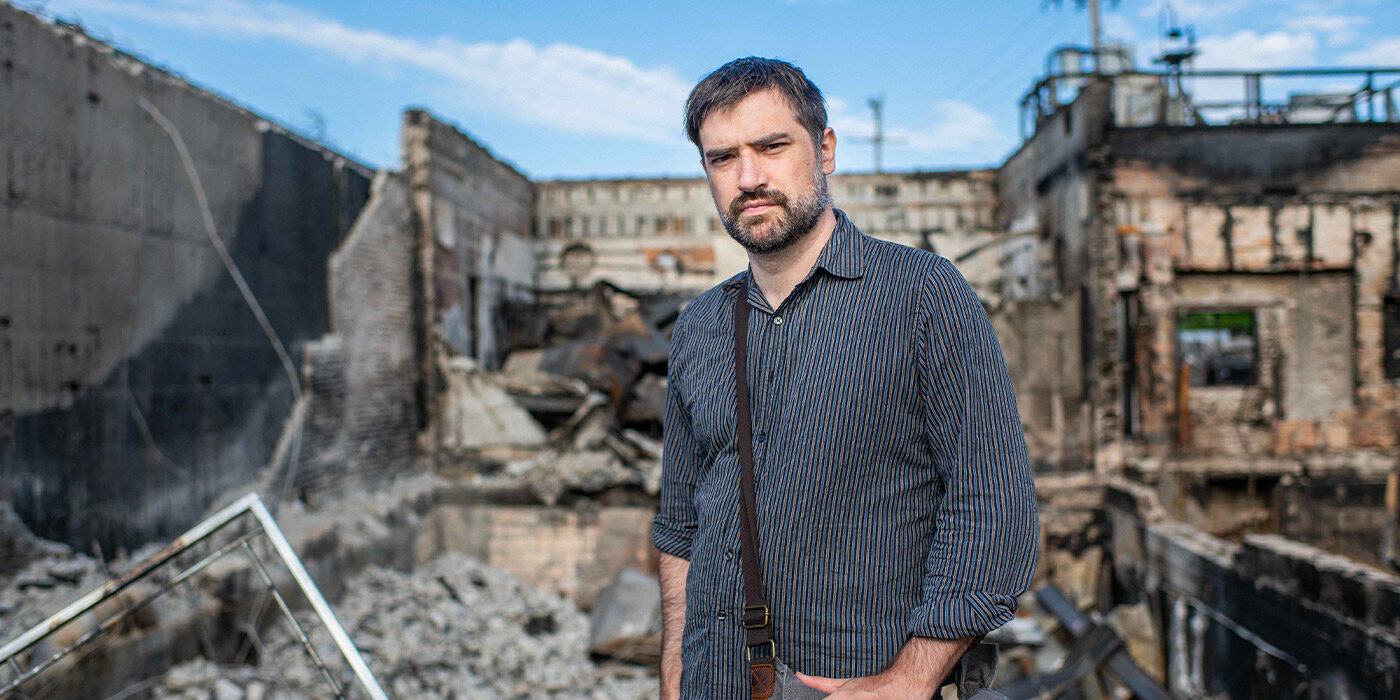
Jared Goyette moved to Minneapolis five years ago to be close to his daughter. As a journalist, he’d covered protests over police brutality before — first at the Mall of America during the Ferguson uprising, and then later after the killing of Philando Castile.
Over the years, he’d developed ties to the city’s activist community, and in the hours after the video of George Floyd’s murder was released, his phone began to buzz.
“I started getting texts from different Black activists in the Twin Cities,” he said. Goyette could tell that Floyd’s killing would lead to unrest, and before long national news outlets began reaching out to ask for his help covering the story.
On May 27th, two days after Floyd’s death, Goyette heard the sound of helicopters buzzing over the Minneapolis Police Department’s Third Precinct. The Precinct had already become a flash point for demonstrations, and Goyette decided to head to the area to see what was happening.
“When I started surveying the scene, it was entirely different from anything I’d seen in my previous years of covering protests against police violence in Minnesota,” he said.
Several hundred people had surrounded the precinct, and officers in riot gear were standing on the roof firing tear gas and rubber bullets at them. Goyette had his camera and notepad with him and, along with other journalists there, was visibly covering the standoff in his role as a reporter.
He saw that a young man had been shot in the head with a ballistic projectile, and moved towards him to try and see if he could do anything to help.
“He was just writhing on the ground in clear, severe pain,” he said. “People were screaming, ‘Call 911.’”
Goyette noticed that his ten-year-old daughter had texted him to ask where he was, so he moved off to the side to text a response. Suddenly, he was on the ground.
“There was a searing pain in my eye,” he recalled. “It wasn’t like I was hit and then I fell, it was like I’m standing and then wait, I’m not standing and everything is black.”
Goyette had been shot in the head with a rubber bullet. His nose was bleeding and his eye was swollen and black. People moved towards him to help, but tear gas began to flood the area.
He managed to woozily make his way to safety, and after gathering his composure for a few minutes, found his car and drove home. Initially, he didn’t think he needed medical attention, but his girlfriend told him he had to visit a community clinic. Health workers there said that if he’d waited longer for treatment, he might have lost sight in that eye.
He says he thinks it’s unlikely that officers didn’t know he was a journalist when they shot him.
Ashoka Mukpo, Staff Reporter, ACLU
“I wasn’t running, I wasn’t chanting,” he said. “Protesters aren’t normally dressed in a dress shirt and slacks.”
Goyette wasn’t the only journalist who was targeted by Minneapolis police that week. Many documented being pepper sprayed despite clearly identifying themselves as reporters. Others were arrested, gassed, threatened, or — like Goyette — shot with rubber bullets. In a clip that went viral, CNN reporter Omar Jimenez was arrested on live television, despite the fact that he was accompanied by a full news crew with cameras and sound equipment.
“I worry that the sort of ‘fake news’ doctrine is leading to journalists being targeted,” said Goyette. “And this is the first time that I think we saw that at a systematic scale.”
On June 3rd, the ACLU filed suit against the City of Minneapolis over the attacks on journalists that were carried out by MPD officers. Goyette is the lead plaintiff in the case.
“I don’t want this to come out wrong, but I feel angry, and a little bit afraid,” he said. “The Police Chief made an apology to journalists who were fired upon, but there wasn’t anything behind that apology. No promise to investigate and hold people accountable, nothing other than a sentimental gesture. And I fear that people are just going to move on.”
Date
Tuesday, June 23, 2020 - 2:15pmFeatured image
